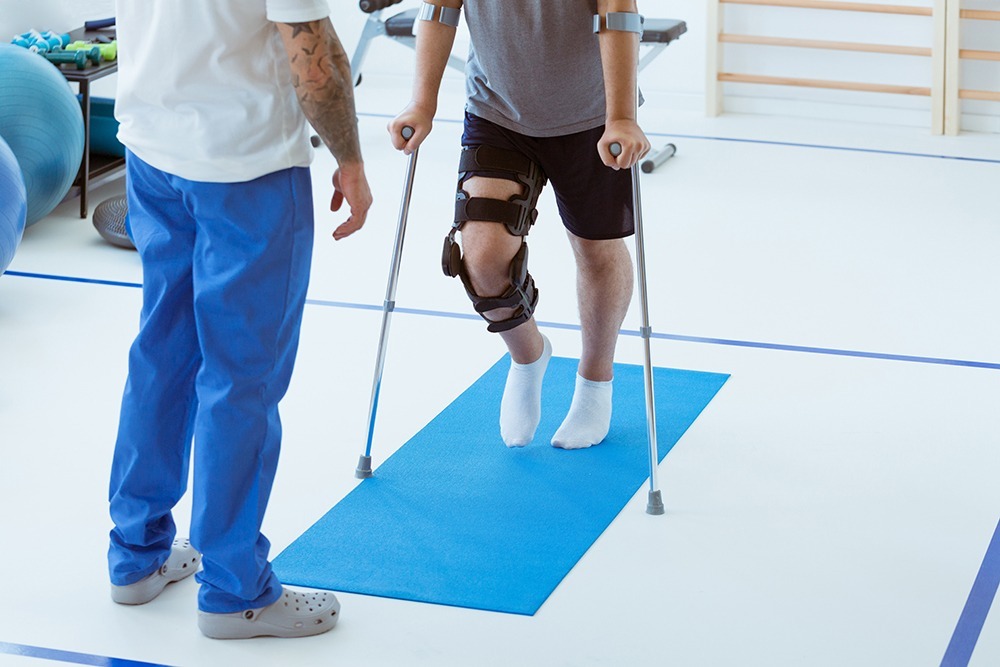Understanding the Impact: How Common Injuries Can Affect Your Long-Term Health
Share:
Pedestrian accidents are a serious concern across the United States, and unfortunately, Florida is no exception. Whether walking to work, jogging in the neighborhood, or simply crossing the street, pedestrians are particularly vulnerable to injuries when involved in a collision with a motor vehicle. The force of an impact can lead to a range of injuries, some of which can be life-altering. In this blog post, we’ll explore the most common types of pedestrian accident injuries, the potential recovery process, and how victims can navigate the aftermath of an accident.
Broken Bones (Fractures)
One of the most common injuries pedestrians sustain in accidents is broken bones or fractures. Pedestrians have little to no protection when struck by a vehicle, making their bones vulnerable to trauma.
Common Fractures in Pedestrian Accidents:
Leg Fractures: The lower extremities are particularly prone to breaking when a pedestrian is hit. Fractures to the femur (thigh bone), tibia (shin bone), and fibula (calf bone) are common.
Arm Fractures: Pedestrians often instinctively raise their arms to shield themselves during an impact, resulting in broken arms or wrists.
Pelvic Fractures: If the pedestrian is hit while walking or standing, the pelvis can sustain significant damage.
Recovery Expectations: Recovery from a bone fracture can vary depending on the severity of the break. For minor fractures, a cast or splint may suffice, but more severe fractures may require surgery, followed by extensive physical therapy. For instance, fractures to the femur may involve a lengthy rehabilitation process, including joint mobility exercises, and can take several months to fully heal.
Head Trauma and Traumatic Brain Injuries (TBI)
Head trauma is another devastating injury that many pedestrians suffer in accidents. Even if a pedestrian is wearing a helmet (which is not common, unless they are on a bike), the force of an impact can still lead to significant head injury. Traumatic brain injuries (TBI) are particularly concerning, as they can lead to long-term complications or permanent disability.
Common Types of Head Injuries:
Concussions: Mild brain injuries that may cause temporary symptoms like dizziness, nausea, confusion, and headaches.
Contusions: Bruises on the brain caused by direct impact.
Skull Fractures: A direct blow to the head can fracture the skull, leading to complications like bleeding or swelling inside the brain.
Cerebral Hemorrhage: Internal bleeding in the brain, which can cause severe neurological damage.
Recovery Expectations: Recovery from head trauma can be highly variable. Mild TBIs such as concussions may resolve within a few weeks with appropriate rest and medical care. However, moderate to severe brain injuries may require surgery to alleviate pressure on the brain, and victims often experience long-term cognitive issues, including memory loss, difficulties with motor skills, and emotional changes. Victims of severe head injuries may require ongoing care, therapy, and monitoring.
Spinal Cord Injuries
The spine plays a critical role in transmitting signals from the brain to the rest of the body, and any injury to the spinal cord can have life-altering consequences. In pedestrian accidents, the impact of a vehicle can cause the spine to be compressed, fractured, or dislocated.
Types of Spinal Cord Injuries:
Cervical Spinal Cord Injury: Injuries to the neck (cervical spine) can result in quadriplegia, where the victim loses function in both the arms and legs.
Thoracic Spinal Cord Injury: Damage to the upper and middle back (thoracic spine) can cause paraplegia, where the lower limbs are affected.
Lumbar or Sacral Spinal Cord Injury: Injuries to the lower back may cause partial or full paralysis of the legs and torso.
Recovery Expectations: Recovery from a spinal cord injury is often limited. While some victims may experience partial recovery with the help of surgery and rehabilitation, many will experience long-term or permanent paralysis. Spinal cord injuries typically require lifelong care, including physical therapy, assistive devices, and potentially home modifications to accommodate mobility challenges.
Soft Tissue Injuries (Sprains, Strains, and Contusions)
Not all pedestrian accident injuries are bone-related. Soft tissue injuries such as sprains, strains, and contusions (bruises) are also common in pedestrian accidents. These injuries can range from mild to severe, depending on the force of the impact.
Types of Soft Tissue Injuries:
Sprains: Injuries to the ligaments that connect bones to each other, often occurring in the ankles or knees.
Strains: Injuries to muscles or tendons, which can happen when the body is suddenly jolted.
Contusions: Bruising or bleeding under the skin from the impact, which can occur anywhere on the body.
Recovery Expectations: Soft tissue injuries generally heal over time with rest, ice, compression, and elevation (the R.I.C.E. method). However, more severe soft tissue injuries can require physical therapy to regain full function. Depending on the injury’s location and severity, recovery times can range from a few weeks to several months.
Internal Injuries
Internal injuries are among the most dangerous types of injuries in pedestrian accidents because they may not be immediately obvious. Internal bleeding can occur in organs such as the lungs, liver, or spleen and may only become apparent once the victim begins to show signs of shock.
Common Internal Injuries:
Internal Bleeding: Damage to internal organs, blood vessels, or muscles can result in internal hemorrhaging.
Organ Damage: Impact to the abdomen or torso can lead to injuries to organs such as the spleen, kidneys, or intestines.
Recovery Expectations: Internal injuries may require immediate surgery to control bleeding or repair damaged organs. Recovery depends on the type and severity of the injury, and in some cases, long-term medical treatment or surgery may be required. Victims may face extended hospitalization, followed by rehabilitation.
How a Personal Injury Lawyer Can Help
If you or a loved one has been involved in a pedestrian accident, seeking legal advice is crucial. Personal injury lawyers specializing in pedestrian accidents can help victims understand their rights and secure the compensation they deserve for medical bills, lost wages, pain and suffering, and more. With experienced legal guidance, you can navigate the complex process of filing a claim, negotiating with insurance companies, and, if necessary, pursuing litigation.
At DuFault Law, we are dedicated to helping individuals who have been injured in pedestrian accidents. Our team is experienced in handling all types of personal injury cases, and we can help you understand the full scope of your injuries, the recovery process, and the steps you need to take to protect your legal rights.
Struck by a Car? Here’s How to Get the Compensation You Deserve After a Pedestrian Accident
If you’ve been injured in a pedestrian accident, don’t wait to take action. The injuries from these accidents can be severe, and you deserve the compensation needed to recover. At DuFault Law, we specialize in helping victims like you fight for their rights and secure the justice you deserve. Whether you’re dealing with broken bones, head trauma, or spinal cord injuries, our experienced team is here to support you every step of the way.
Contact us now at (239) 422-6400 or email contact@dufaultlaw.com for a free consultation. Let us help you navigate the legal process while you focus on healing. Your recovery and future are too important to leave to chance—trust us to be your advocates.



Comments are closed